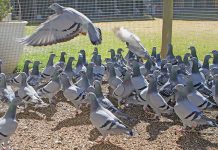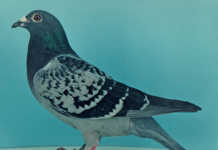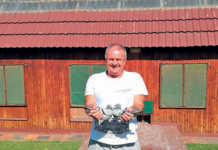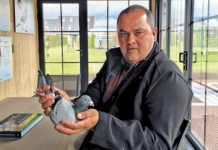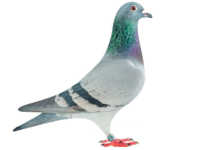Good mentorship
The best route to take is to befriend a champion fancier in your area who’s known to have a commendable success rate in helping beginners. Sometimes novices are found to be unteachable.
Out of desperation, a fancier’s wife once asked my assistance with her husband’s pigeons. Not presuming to know it all, I paid them a visit.Three “adjustments” were made: correcting the loft ventilation, treating for respiratory ailments and cutting down on exercise. They won the next race event.Don’t kill your pigeons!There are experienced selectors that are skilled in judging the show perfection of your pigeons, but there are also arrogant selectors who instruct novices to kill the birds they disregard.
A beginner in Tshwane had the same selector out twice to judge his pigeons. On the second visit, this judge condemned pigeons that he rated as aces during his first visit, and pigeons he gave low ratings to then, were now marked as champions.
nother fancier killed the female of a breeding pair on the insistence of a selector who regarded it as inferior.
The following season, youngsters bred from the pair scored at the top. The selector’s excuse was that it is the male of the pair that had passed on the quality, not the hen. However, it was later found that the best youngsters bred from this male were out of the mate that had been killed.
Weak back
Told your pigeon has a weak back? Don’t believe it. The back is situated between the shoulders at the extended upper part of the body, and extends towards the tail attachment. The back is made of bone and cannot be weak; otherwise it could fracture through injury.
This weakness is often actually felt in the area where the tail attachment connects to the body, and which feels like it gives way to the touch. Often, in what is mistakenly called a “weak back” it’s this area which is at fault. Pigeons with weak tail attachments do win races and breed winners. However, select mates for these birds that are strong in this area, as passing on this weakness can go to the bad of the entire loft.
Open vents
Vents too open? Don’t believe it. When holding a bird in the hand, move your fingertips along the keel bone towards the tail until you reach the end of the bone.so you carry on moving you will find two soft, fleshy bones arranged in a “V”-shape – these are the vent bones.
When the vent bones don’t knit tightly (and most don’t), some fanciers mistakenly comment that the vents are open. Experienced fanciers often use this terminology, which is wrong. If the vents, which are enclosed by the vent bones, were open, the bird’s intestines would fall out, which is impossible.
On cocks the vent bones generally knit together better. Close inspection reveals X-vent bones, “twisted” vent bones, hook-shaped vent bones or a case were one vent bone is set at a higher level than the other – champions are being found among them all.
Don’t rely on eye-sign
Bad eye-sign? Don’t believe it. I’ve heard complaints about eye-sign experts killing good stock pigeons because they had what they called a “racer’s eye”. My own research strongly indicates one needs to mate contrasting eye pigmentation, circles, signs and designs together to maintain balance, etc.The circle of adaptation, situated along the border of the pupil (seen through a jeweller’s magnifier), will be found to be strong in either of the parents of good long-distance pigeons.
To kill a bird on the inspection of its eye alone is heresy.Unless you want to be a show champion only, be tolerant of “mistakes” in favour of the genetic package.


